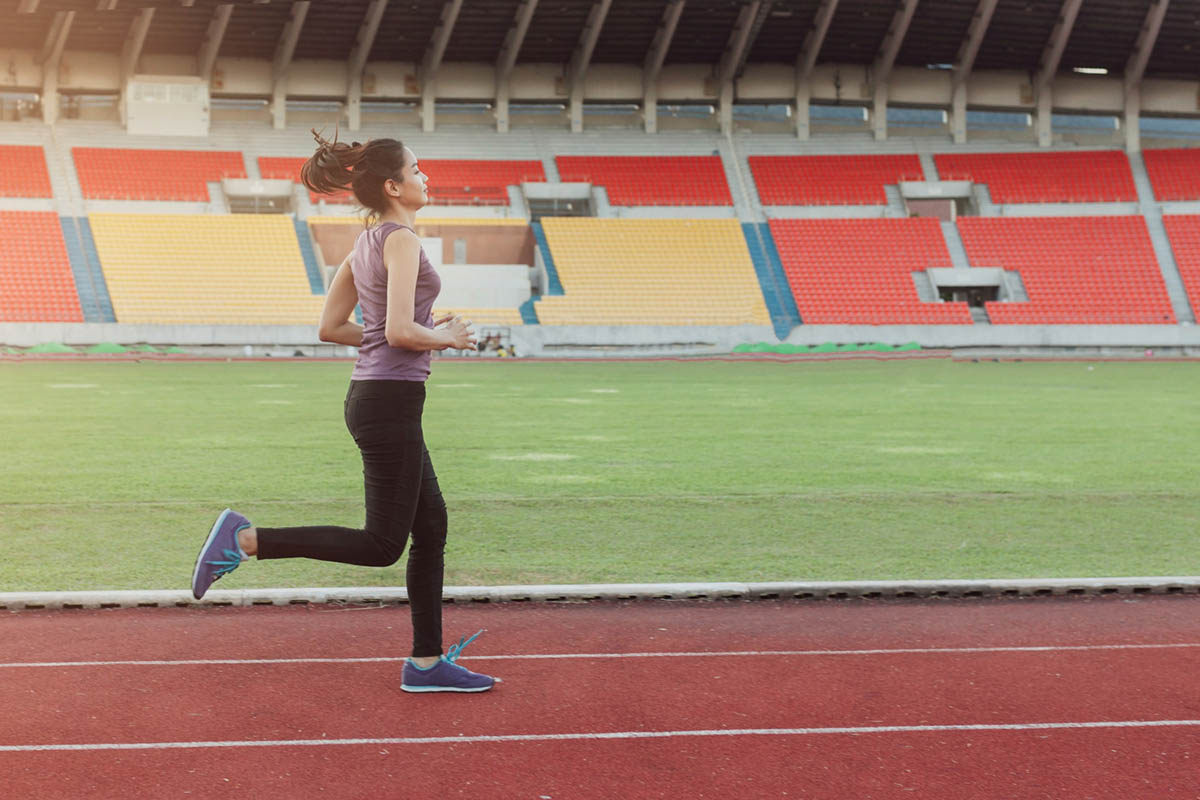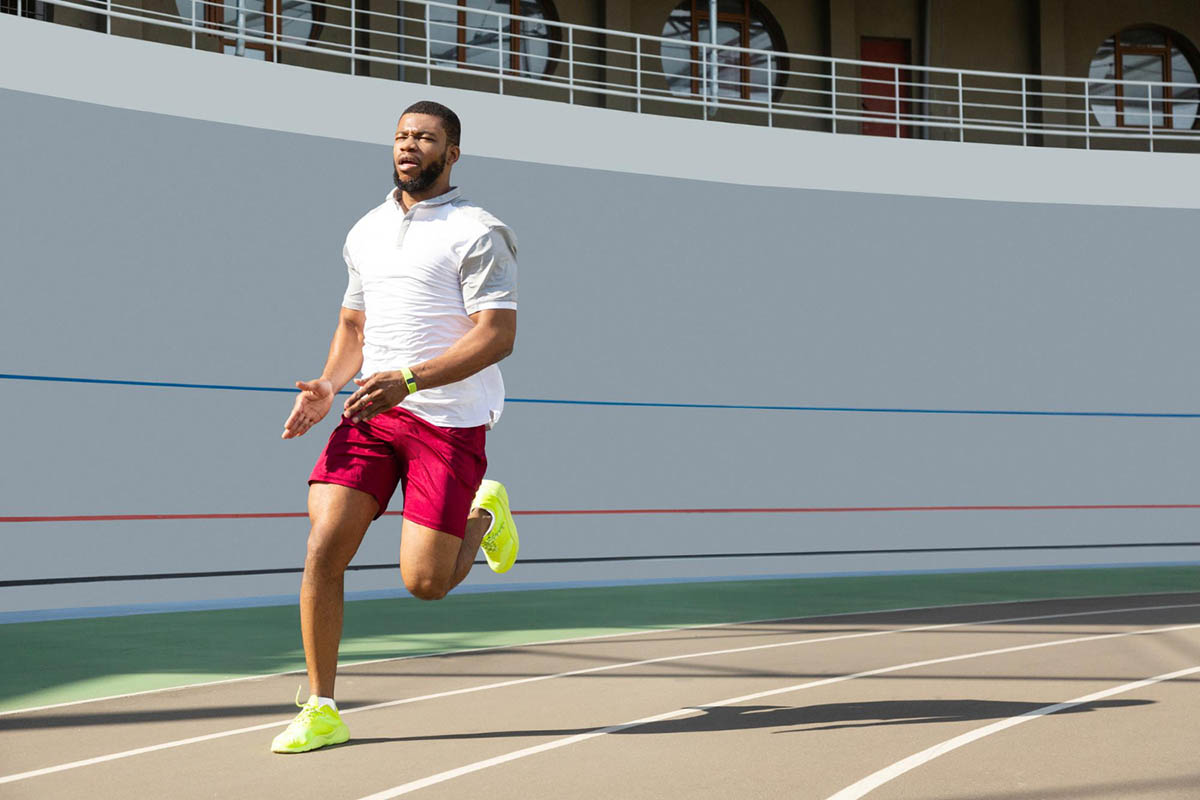Introduction
Running is a natural and accessible form of exercise, but it involves more complexity than one might initially assume. One crucial aspect of running mechanics is the foot strike—the part of the foot that first makes contact with the ground. Understanding and analyzing your foot strike can help optimize performance and reduce the risk of injury. By knowing the impact of foot strike on running, both recreational runners and competitive runners can make informed decisions to enhance their running experience and longevity. Additionally, a systematic review of various studies shows that the vast majority of running injuries can be linked to improper foot strike mechanics, highlighting the importance of this analysis.
What is a Foot Strike?
In the context of running, a foot strike refers to the part of the foot that initially contacts the ground during each running step. This concept is fundamental to understanding running biomechanics. A proper running foot strike plays a significant role in how force is distributed through your body and how efficiently you run. Understanding how to run properly foot strike can lead to fewer injuries and improved performance. Scientific evidence suggests that different foot strike patterns, such as rearfoot, midfoot, and forefoot, impact the body in unique ways.
Types of Foot Strikes
Heel Strike
A heel strike occurs when the heel is the first part of the foot to touch the ground. This type of strike is common among many runners, especially beginners. Heel striking can lead to higher impact forces on the knees and is often associated with shod runners, who wear cushioned shoes to mitigate these forces. Rearfoot strike runners are more prone to issues such as plantar fasciitis due to the increased stress on the heel and arch.
Midfoot Strike
A midfoot strike happens when the middle of the foot makes initial contact with the ground. This strike is often seen in more experienced runners and is considered by many as the best foot strike for running due to its balanced distribution of forces. Midfoot striking can help reduce the vertical loading rate and spread the impact more evenly across the foot. Midfoot strikers tend to have a lower risk of running injuries compared to heel strikers.
Forefoot Strike
In a forefoot strike, the ball of the foot lands first. This strike pattern is typical among sprinters and some long-distance and recreational runners. Forefoot striking tends to engage the calf muscles more and can decrease the vertical ground reaction forces compared to heel striking. However, it can increase the load on plantar flexor muscles and the risk of tendon injuries. Forefoot runners, especially those who run in minimalist shoes, need to be mindful of the additional load this strike places on their calves and Achilles tendons.
How Different Foot Strikes Affect Running Mechanics and Injury Risks
Each type of foot strike affects running mechanics and injury risks differently. Heel strikers, for instance, may experience more stress on their knees and are more prone to running-related knee injuries. Forefoot strike runners often place more strain on their calves and Achilles tendons, leading to a higher risk of tendon injuries. Midfoot strike patterns generally provide a more balanced force distribution, reducing the risk of various running-related injuries. The relationship between foot strike patterns and injury risk is complex, and individual studies have shown varied results regarding which foot strike pattern is most beneficial.
Why Foot Strike Analysis is Important

Analyzing foot strikes is crucial for several reasons. It helps runners understand their biomechanics, identify potential sources of injury, and optimize performance. For instance, understanding your average loading rate and active peak can help in adjusting your running form to reduce the risk of injuries such as plantar fasciitis and stress fractures. Foot strike analysis can also aid in identifying whether a runner has a flat foot or high arch, both of which can affect running mechanics and injury risks. The vast majority of rearfoot strike runners and forefoot strike runners can benefit from such analysis to optimize their performance and minimize injuries.
How Foot Strike Affects Running Biomechanics
The way your foot strikes the ground impacts your running biomechanics, including your posture, stride, and the way forces travel through your body. A proper foot strike can enhance efficiency and reduce strain. Foot strike pattern changes can significantly affect the vertical impact peak and overall running efficiency.
Common Injuries Associated with Different Types of Foot Strikes
- Heel Strike: Often linked to knee pain and stress fractures due to the higher impact forces on the knee joint. This type of strike can also increase the risk of running-related knee injuries.
- Midfoot Strike: Typically associated with lower injury rates, though it can still cause issues if overall biomechanics are poor or if there is a lack of consistency in running form.
- Forefoot Strike: Commonly leads to calf strains and Achilles tendonitis due to the increased load on the calf muscles and Achilles tendon.
Importance of Foot Strike Analysis for Optimizing Performance and Reducing Injury Risk
By analyzing foot strikes, runners can make informed adjustments to their form, choose appropriate footwear, and reduce the likelihood of injuries, thereby enhancing overall performance. Foot strike analysis helps identify patterns in runners and the relationship between foot strikes and injury, enabling more effective training and injury prevention strategies.
How to Analyze Your Foot Strike
Tools and Technology Available for Foot Strike Analysis
Modern technology offers several tools to analyze foot strikes effectively.
High-Speed Cameras
High-speed cameras can capture detailed footage of your running form, allowing for precise analysis of your foot strike. This method is considered a gold standard for visualizing the initial ground contact and stance phase.
Pressure Sensors and Treadmills
Pressure sensors and specialized treadmills measure the distribution of forces as your foot contacts the ground, providing insights into your strike pattern. These tools can help identify distinct loading patterns and measure the vertical ground reaction forces.
Wearable Technology
Wearable devices can track various aspects of your running mechanics, including foot strike patterns, and provide real-time feedback. These devices offer continuous measurements, making it easier to monitor and adjust your running form over a period of time.
Interpreting Foot Strike Data
What to Look For
When analyzing foot strike data, consider these key factors:
Type of Foot Strike
Identify whether you are a heel, midfoot, or forefoot striker. The type of foot strike can influence the vertical loading rate and overall running efficiency.
Contact Time
Measure the amount of time your foot spends in contact with the ground during each stride. Shorter contact times can indicate more efficient running mechanics.
Balance and Symmetry
Assess whether there is a balance between the left and right foot strikes and if any asymmetries exist. Lack of balance and symmetry can lead to overuse injury outcomes and increased injury risks.
Determining Inefficiencies or Potential Injuries
Foot strike data can reveal inefficiencies and potential injury risks.
Repetitive Patterns
Look for repetitive patterns that may indicate overuse or poor running form. Repetitive injury rates can be reduced by addressing these patterns.
Alignment Issues
Identify any misalignments that could lead to imbalances and strain. Proper alignment is crucial for minimizing the impact of foot strikes on the body.
Impact Forces
Measure the forces exerted on your body with each foot strike to understand potential areas of stress. High-impact forces can increase the risk of foot injuries and running-related injuries.
Tips on Understanding Balance and Symmetry
Utilize tools like video analysis and force plate data to gain a comprehensive understanding of your foot strike and ensure balanced and symmetrical running mechanics.
Video Analysis
Reviewing slow-motion video can help pinpoint asymmetries and areas for improvement. Video analysis provides a visual representation of the gait cycle and stance phase.
Force Plate Data
Force plates provide detailed data on how your foot strike impacts the ground, offering insights into balance and force distribution. This data is crucial for identifying inefficiencies and making informed adjustments.
Adjusting Your Foot Strike

Changes in Running Form
Making changes to your foot strike can improve your running efficiency and reduce injury risk.
Transitioning Foot Strike
Gradually adjust your foot strike type to a more natural and efficient pattern if necessary. Transitioning from a heel strike to a midfoot or forefoot strike should be done gradually to avoid excessive load on plantarflexor muscles.
Cadence Adjustments
Increasing your cadence (steps per minute) can help reduce the impact forces on your body. Higher cadence often leads to shorter contact times and less vertical impact peak.
Postural Adjustments
Improving your posture can enhance your running form and promote a better foot strike. Proper posture helps distribute forces evenly and reduces the risk of injury.
Specific Exercises
Certain exercises can strengthen and support a more efficient foot strike.
Strength Training
Focus on exercises that strengthen the muscles involved in running, such as the calves, quads, and glutes. Strength training can help mitigate the impact of foot strikes and improve overall running performance.
Flexibility and Mobility Work
Incorporate stretches and mobility exercises to improve flexibility and reduce the risk of injury. Flexibility in the lower body can help achieve a more natural foot strike pattern.
Proprioceptive Exercises
Proprioceptive exercises can enhance your body’s awareness and control, leading to better running mechanics. These exercises help improve balance and coordination, which are essential for an efficient foot strike.
Monitoring Adjustments
Regularly monitoring your progress is essential to ensure the effectiveness of any changes made.
Regular Check-ins
Periodically reassess your foot strike to ensure improvements and address any new issues that arise. Continuous form evaluation is key to maintaining efficient running mechanics.
Feedback from Experts
Seek feedback from running coaches or physical therapists to refine your technique and prevent injuries. Expert analysis can provide insights into specific areas for improvement and help optimize your foot strike.
Discover the Basics of Running Assessment: Analyze Your Foot Strike with Austin Manual Therapy Associates
At Austin Manual Therapy, we specialize in providing comprehensive physical therapy services to help you achieve optimal performance and reduce injury risks. Our expert team offers detailed running assessment services to analyze your foot strike and running mechanics. Whether you’re dealing with chronic pain or seeking to enhance your running efficiency, our physical therapy solutions for foot pain are tailored to meet your needs—Trust Austin Manual Therapy to support your journey toward better health and improved athletic performance.
Conclusion
Understanding and analyzing your foot strike is crucial for optimizing running performance and reducing injury risk. By utilizing modern tools and techniques, you can gain valuable insights into your running mechanics and make informed adjustments to improve your form. Foot strike analysis can help both recreational and competitive runners achieve their goals and enjoy a healthier running experience.
FAQs
What is the proper foot strike when walking?
A proper foot strike when walking typically involves a heel-to-toe motion, where the heel contacts the ground first, followed by a roll through to the toes. This natural gait cycle helps distribute forces evenly and supports efficient walking mechanics.
What is the normal foot position?
The normal foot position varies among individuals but generally involves a neutral alignment where the feet point straight ahead and weight is evenly distributed. This position helps minimize the risk of overuse injuries and supports balanced movement.
What is the proper foot balance?
Proper foot balance involves an even distribution of weight across both feet, with no excessive pronation (inward roll) or supination (outward roll). Achieving proper foot balance is crucial for reducing the risk of running-related injuries and enhancing overall performance.





